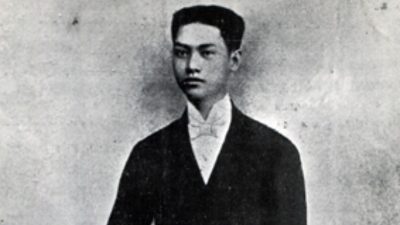MANILA — In a world increasingly dominated by digital screens and high-tech gadgets, the charm of traditional Filipino games continues to stand the test of time.
These games passed down through generations, embody the essence of simplicity, camaraderie, and sheer joy.
Let’s take a delightful journey through some of the most beloved traditional Filipino games that have been cherished by both young and old alike.
Tumbang Preso (Knock Down the Prisoner):
Tumbang Preso, or Knock Down the Prisoner, is a game that combines accuracy and agility. Players take turns aiming at an empty can placed in the middle while avoiding the “it” player, who guards the can and tries to tag others.
Luksong Tinik (Jump Over Thorns):
Luksong Tinik challenges players to showcase their jumping prowess. The “thorns,” typically made from folded hands or sticks, escalate in height as players successfully clear each round, making this game a test of both skill and courage.
Piko (Hopscotch):
Piko, a timeless classic, involves a hopscotch pattern drawn on the ground. Players hop through numbered squares, navigating a specific pattern and avoiding stepping on the marker or lines. It’s a game that combines physical activity with strategic thinking.
Patintero (Crossing Lines):
In the game of Patintero, two teams face off by attempting to cross each other’s lines without being tagged. The team with the most successful crossings emerges victorious, fostering teamwork and quick decision-making.
Sipa:
Sipa is a game that highlights footwork finesse. Using their feet, players kick a rattan ball, aiming to keep it in the air and prevent it from touching the ground. It’s a display of skill, control, and coordination.
Agawang Sulok (Corner Catch):
Agawang Sulok is a game of evasion and pursuit. Players dash from one corner to another, attempting to outsmart the “it” player and avoid being tagged. This game is not just about speed but also about strategy and quick reflexes.
Takyan:
Takyan, similar to hacky sack, involves using the feet to keep a small rattan ball off the ground. The goal is to achieve the longest continuous kick, showcasing precision and balance.
Dama (Checkers):
Dama, a traditional board game, engages players in a battle of wits. Moving pieces diagonally on a square board, players strategize to capture their opponent’s pieces in this classic game of skill and foresight.
Sungka:
Sungka, a traditional mancala game, invites players to distribute shells or stones strategically in wooden holes, aiming to capture their opponent’s pieces. It’s a game that combines mathematical thinking with tactical planning.
Bato-bato Pik (Rock-Paper-Scissors):
Bato-bato Pik, a Filipino variant of rock-paper-scissors, is a decision-making tool and a quick game often used to determine who goes first in other games. It adds an element of chance and lightheartedness to the mix.
These traditional Filipino games not only entertain but also carry the rich cultural heritage of the Philippines.
As we embrace modernity, it’s heartening to see these games endure, providing a bridge between generations and a source of pure, unadulterated joy.
In a world that sometimes feels overly complex, these games serve as a reminder of the simple pleasures that bring people together, fostering laughter, camaraderie, and a shared love for the traditions that make us who we are.
(JR AMIGO/AI/MNM)







